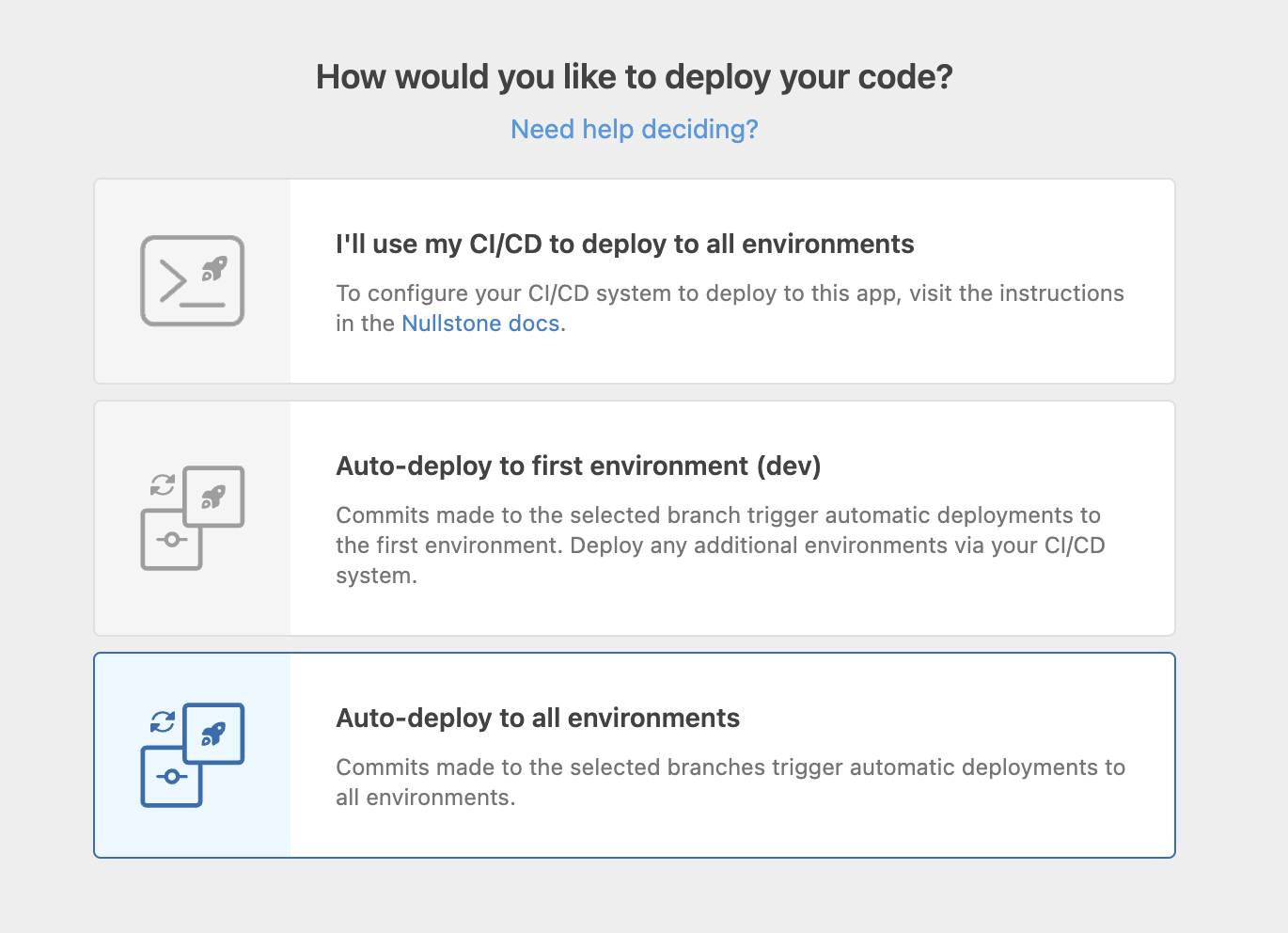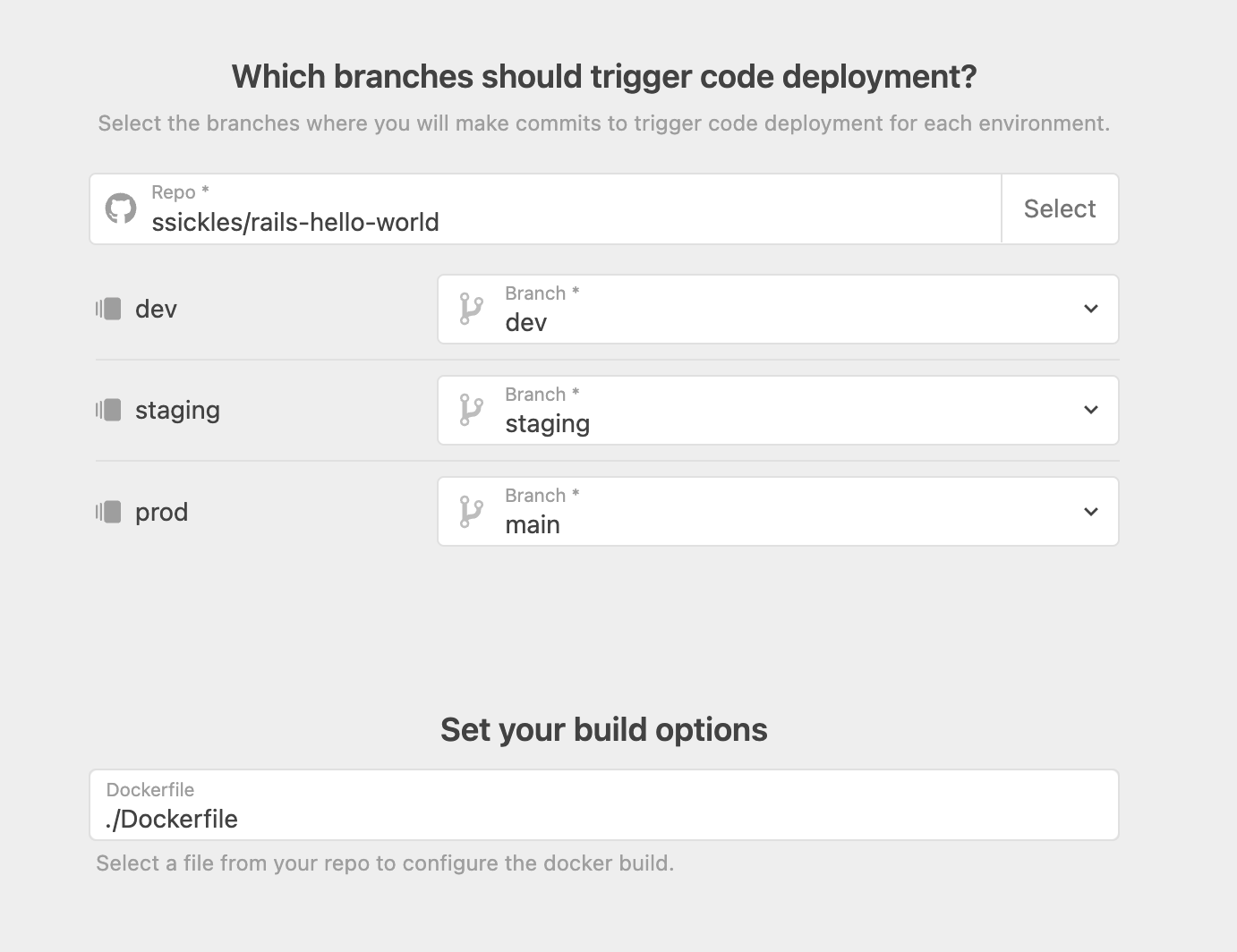Automatic Deployment
Choose builder
When using auto-deploy, you must configure a builder to use to build your application. Refer to Auto-build for more information.
Choose deployment method
Configuring the deployment method for your application can be done while creating a new app. It can also be changed at any time from the application settings page.
By default, applications are configured for custom CI/CD workflows. To enable automatic deployments, select whether you would like to turn it on for the first environment or all environments. For many teams, the first environment is a dev or staging environment that doesn't require tests or approval to deploy.
No matter which option you choose, manual deployments through the CLI are always available.

Enable Automatic Deployment
If you enable automatic deployment, the next step is to configure what will trigger a deployment. Select the repo that contains your application code and then select the branch for each environment.

Server Applications
If you are launching a server application, Nullstone will launch the virtual machine and provide you with the connection information. In this case, you will need to configure your server using Chef, Puppet, Ansible, bash, or whatever tools you prefer.
To easily connect to your server, one option is to use the nullstone ssh command. Or you can configure SSH access and protect access with a Bastion and/or VPN.